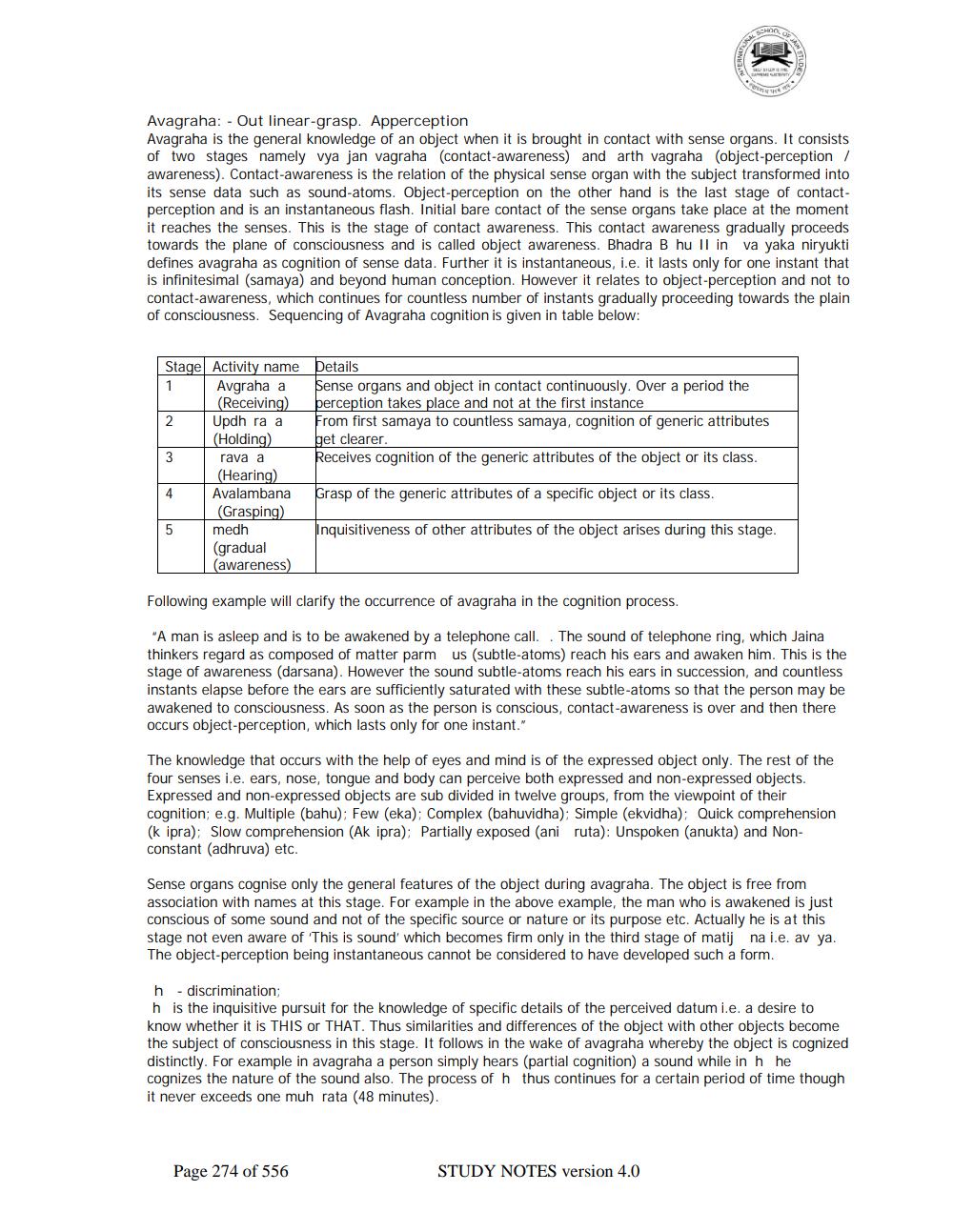________________
Avagraha: - Out linear-grasp. Apperception Avagraha is the general knowledge of an object when it is brought in contact with sense organs. It consists of two stages namely vya jan vagraha (contact-awareness) and arth vagraha (object-perception / awareness). Contact-awareness is the relation of the physical sense organ with the subject transformed into its sense data such as sound-atoms. Object-perception on the other hand is the last stage of contactperception and is an instantaneous flash. Initial bare contact of the sense organs take place at the moment it reaches the senses. This is the stage of contact awareness. This contact awareness gradually proceeds towards the plane of consciousness and is called object awareness. Bhadra B hu II in va yaka niryukti defines avagraha as cognition of sense data. Further it is instantaneous, i.e. it lasts only for one instant that is infinitesimal (samaya) and beyond human conception. However it relates to object-perception and not to contact-awareness, which continues for countless number of instants gradually proceeding towards the plain of consciousness. Sequencing of Avagraha cognition is given in table below:
Stage Activity name Details
Avgraha a Sense organs and object in contact continuously. Over a period the (Receiving) perception takes place and not at the first instance Updh ra a From first samaya to countless samaya, cognition of generic attributes (Holding) get clearer.
rava a Receives cognition of the generic attributes of the object or its class. (Hearing) Avalambana Grasp of the generic attributes of a specific object or its class.
(Grasping) medh
Inquisitiveness of other attributes of the object arises during this stage. (gradual (awareness)
Following example will clarify the occurrence of avagraha in the cognition process.
"A man is asleep and is to be awakened by a telephone call. . The sound of telephone ring, which Jaina thinkers regard as composed of matter parmus (subtle-atoms) reach his ears and awaken him. This is the stage of awareness (darsana). However the sound subtle-atoms reach his ears in succession, and countless instants elapse before the ears are sufficiently saturated with these subtle-atoms so that the person may be awakened to consciousness. As soon as the person is conscious, contact-awareness is over and then there occurs object-perception, which lasts only for one instant."
The knowledge that occurs with the help of eyes and mind is of the expressed object only. The rest of the four senses i.e. ears, nose, tongue and body can perceive both expressed and non-expressed objects. Expressed and non-expressed objects are sub divided in twelve groups, from the viewpoint of their cognition; e.g. Multiple (bahu): Few (eka): Complex (bahuvidha): Simple (ekvidha): Quick comprehension (k ipra): Slow comprehension (Ak ipra): Partially exposed (ani ruta): Unspoken (anukta) and Nonconstant (adhruva) etc.
Sense organs cognise only the general features of the object during avagraha. The object is free from association with names at this stage. For example in the above example, the man who is awakened is just conscious of some sound and not of the specific source or nature or its purpose etc. Actually he is at this stage not even aware of 'This is sound' which becomes firm only in the third stage of matij na i.e. av ya. The object-perception being instantaneous cannot be considered to have developed such a form.
h - discrimination; h is the inquisitive pursuit for the knowledge of specific details of the perceived datum i.e. a desire to know whether it is THIS or THAT. Thus similarities and differences of the object with other objects become the subject of consciousness in this stage. It follows in the wake of avagraha whereby the object is cognized distinctly. For example in avagraha a person simply hears (partial cognition) a sound while in h he cognizes the nature of the sound also. The process of h thus continues for a certain period of time though it never exceeds one muh rata (48 minutes).
Page 274 of 556
STUDY NOTES version 4.0




